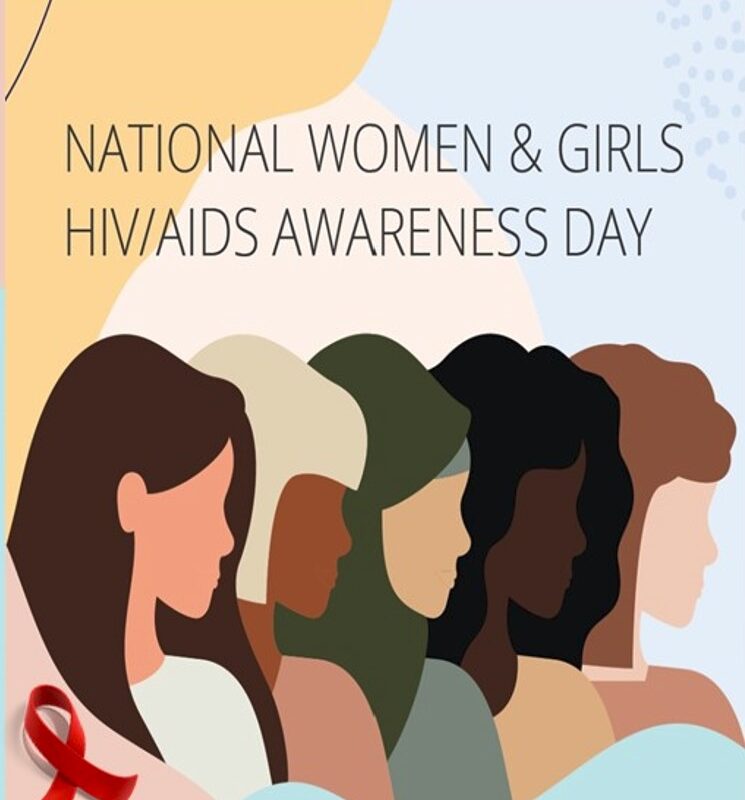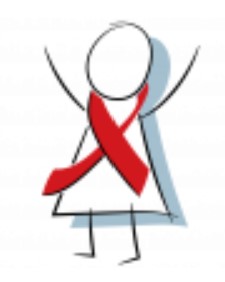
Since 2005, March 10 marks the annual observance of the National Women and Girls HIV/AIDS Awareness Day (NWGHAAD). March 2023 is the 18th annual NWHAAD’s to raise awareness about all women living with, affected, by, and at risk for HIV. Yes, women in 2023 continue to be deeply impacted by HIV across the lifespan and need the continued resources and support that all people need who live with HIV. Let’s use this month not only as a “nationwide observance day” and to raise awareness, but to make a real difference in the health and wellness of women and girls day living with and at risk for HIV.
The foundation of the National Women and Girls HIV/AIDS Awareness Day (NWGHAAD) is an annual, nationwide observance, led by the U.S. Department of Health and Human Services’ Office on Women’s Health (OWH). Every year on March 10 — and throughout the month of March — local, state, federal, and national organizations come together to shed light on the impact of HIV and AIDS on women and girls and show support for those at risk of and living with HIV.
The theme for NWGHAAD 2023 is Prevention and Testing at Every Age. Care and Treatment at Every Stage. This year’s theme reinforces the first and second goals of the National HIV/AIDS Strategy, which focuses on the prevention of new HIV infections and improving HIV-related health outcomes for people living with HIV.
How Does HIV Affect Women?
In the United States, about 23% of people living with HIV are women and, in 2018, women made up 19% of new HIV diagnoses. The highest number of new diagnoses were among women ages 25 to 44. Advances in testing, treatment, and prevention have resulted in progress towards the nation’s goal to end the HIV epidemic by 2030.
The National HIV/AIDS Strategy aims to reduce disparities by prioritizing populations including Black women, transgender women, youth aged 13-24 years, and people who inject drugs. Black women are disproportionately affected by HIV compared to women of other races/ ethnicities. Although annual HIV infections remained stable among Black women from 2015 to 2019, the rate of new HIV infections among Black women was 11 times that of White women and 4 times that of Latina women. The National HIV/AIDS Strategy recognizes racism as a serious public health threat, acknowledges ways in which it drives and affects HIV outcomes, and highlights numerous opportunities to intervene to eliminate the HIV-related disparities and pursue equity in our national HIV response.
What are the neurological complications of AIDS and HIV?
The Human Immunodeficiency Virus (HIV), which causes the disorder Acquired Immunodeficiency Syndrome (AIDS), primarily affects the immune system but also can lead to a wide range of severe neurological disorders, particularly if HIV goes untreated and progresses to AIDS. Many of the most severe neurological conditions can be prevented with antiretroviral therapy. Learn More
What factors put women at risk for HIV?
The chance of getting or transmitting HIV varies widely depending on the type of exposure. Most commonly, people get or transmit HIV through anal or vaginal sex, or sharing needles, syringes, or other drug injection equipment.
In women, several factors increase the risk of HIV transmission. For example, during vaginal or anal sex, a woman has a greater risk for getting HIV because, in general, receptive sex is riskier than insertive sex. A woman’s risk of HIV can also increase if her partner engages in high-risk behaviors, such as injection drug use or having sex with other partners without using condoms.
How can a person reduce the risk of getting HIV?
Everyone has a role to play in HIV prevention. There are steps you can take to protect yourself, your partner, your patients, family, and neighbors from HIV infection. Learn how.
-
Find HIV Testing and Other Services
-
Use the HIV Testing Sites & Care Services Locator
-
Visit CDC’s Get Tested website to find free and confidential HIV, STD, and Hepatitis testing near you
-
HIV Testing
-
PrEP and PEP are for Women Too!
-
Prep
-
This National Women and Girls HIV/AIDS Awareness Day, talk to your doctor about taking PrEP, a medicine that can reduce your risk of getting HIV.
-
PrEP is medication that is highly effective for preventing HIV. PrEP reduces the risk of getting HIV from sex by about 99% when taken as prescribed.
-
PrEP medications are available at no-cost to people who qualify through Ready, Set, PrEP.

